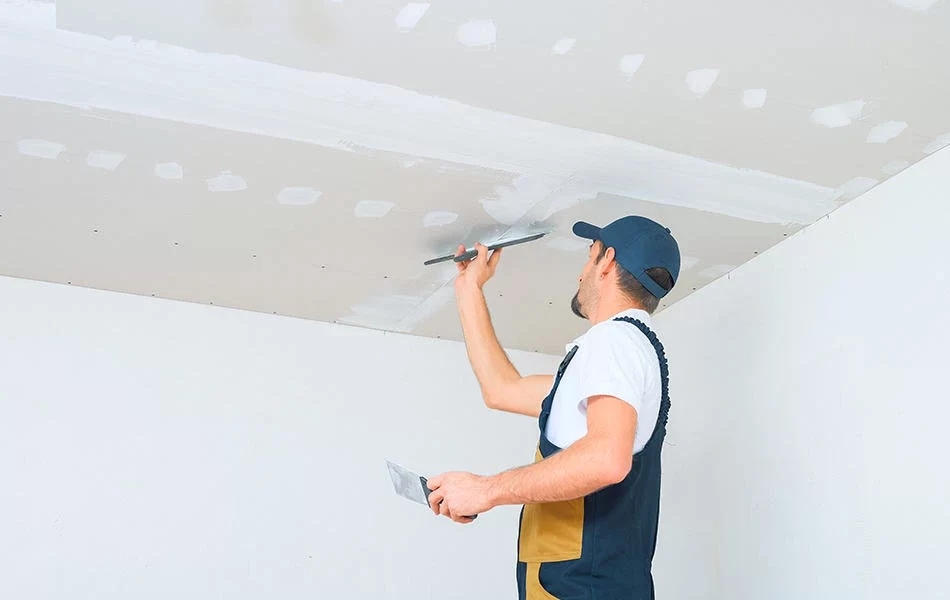Ceilings often get overlooked. They’re the fifth wall of your space, but they can significantly impact a room’s overall feel and style. Choosing the right ceiling type is crucial for setting the mood and enhancing interior decor From cozy nooks to grand ballrooms, various ceiling styles offer unique benefits and aesthetics that can transform any area.
Pros and Cons of Each Type

.Popcorn ceilings, once popular for their texture, can hide imperfections well. They tend to collect dust and can be difficult to clean or repair.
Tray ceilings add depth and sophistication to a room. They create visual interest, but due to their complex designs, they may require more maintenance.
Vaulted ceilings elevate spaces with an airy feel. While they enhance natural light, installing lighting fixtures can become challenging in high areas.
Coffered ceilings offer elegance through intricate paneling. They are visually striking but often come at a higher installation cost compared to simpler styles.
Each ceiling type has unique character and challenges that deserve careful consideration before deciding.
Popcorn Ceilings

Popcorn, acoustic, or textured ceilings were once popular for homeowners. Their distinctive bumpy texture was designed to absorb sound and hide imperfections.
Installation is relatively quick and inexpensive, making them an attractive option during renovations. Many appreciated the added acoustics in living spaces like bedrooms and home theaters.
Popcorn ceilings have their drawbacks. Cleaning can be challenging due to the uneven surface. Dust and cobwebs cling stubbornly, requiring extra effort to maintain cleanliness.
Many homeowners need to find the look updated today. Removing or covering these textures can be labor-intensive and costly if you decide to modernize your space later.
Moreover, there may be concerns regarding asbestos in older homes with popcorn finishes. It’s essential to check before undertaking any repairs or removals.
Tray Ceilings
Tray ceilings add a touch of elegance to any room. Their recessed center creates depth and dimension, making spaces feel more sophisticated.
These ceilings can easily enhance your home’s aesthetics. You can paint the tray in contrasting colors or incorporate architectural details for flair. Lighting options are plentiful; recess lights around the perimeter can create stunning effects.
Maintenance is relatively easy, as they usually don’t require extensive upkeep like some textured ceiling types. Due to their complexity, installation might be more costly.
One consideration is height. Tray ceilings work best in rooms with sufficient vertical space; otherwise, they may seem cramped or out of place. Before committing to this stylish option, consider how it integrates with your overall design theme.
Vaulted Ceilings

Vaulted ceilings create a stunning visual impact in any room. Their elevated structure draws the eye upward, making spaces more spacious and airy.
These ceilings often have unique architectural features, such as exposed beams or skylights. These features can enhance natural light, giving your home a warm glow throughout the day.
Maintenance might be an issue for some homeowners. Cleaning high surfaces requires effort and sometimes professional help. Additionally, due to increased air volume, heating and cooling costs may rise.
Despite these challenges, vaulted ceilings remain popular for their aesthetic appeal. They lend themselves well to both modern and traditional designs alike.
Coffered Ceilings

Coffered ceilings exude elegance and sophistication. They consist of a grid pattern formed by recessed panels, creating depth and visual interest in any room.
This design element works beautifully in both traditional and modern spaces. The interplay of light and shadows adds character to the ceiling, making it a focal point.
Installation can be more complex than that of other ceiling types, often requiring professional help. However, the stunning results are typically worth the investment.
Coffered ceilings can also enhance acoustics, reducing noise levels while adding aesthetic appeal. Paint or stain options allow for customization to match your decor seamlessly.
These ceilings elevate dining rooms and home offices alike. If you’re aiming for luxury without overwhelming ornamentation, this choice is ideal for creating an inviting atmosphere.
Conclusion
Several factors come into play when deciding on the best ceiling type for your space. First, consider your home’s overall style. A coffered ceiling might complement a traditional design, while a modern aesthetic may call for something sleeker.
Next, think about the room’s function. High ceilings can create an airy feel in living rooms or entryways but may not be ideal for cozy bedrooms. Maintenance is crucial; textured surfaces like popcorn ceilings can collect dust and require more upkeep than smoother finishes.
Remember to factor in the height of your ceilings as well. Vaulted ceilings work beautifully in spacious areas but can overwhelm smaller rooms. Budget constraints will also influence your decision—some ceiling types are more affordable than others.
Take time to weigh these considerations against what you envision for your space. Your choice should enhance aesthetics and functionality while fitting seamlessly with your home’s design philosophy.




